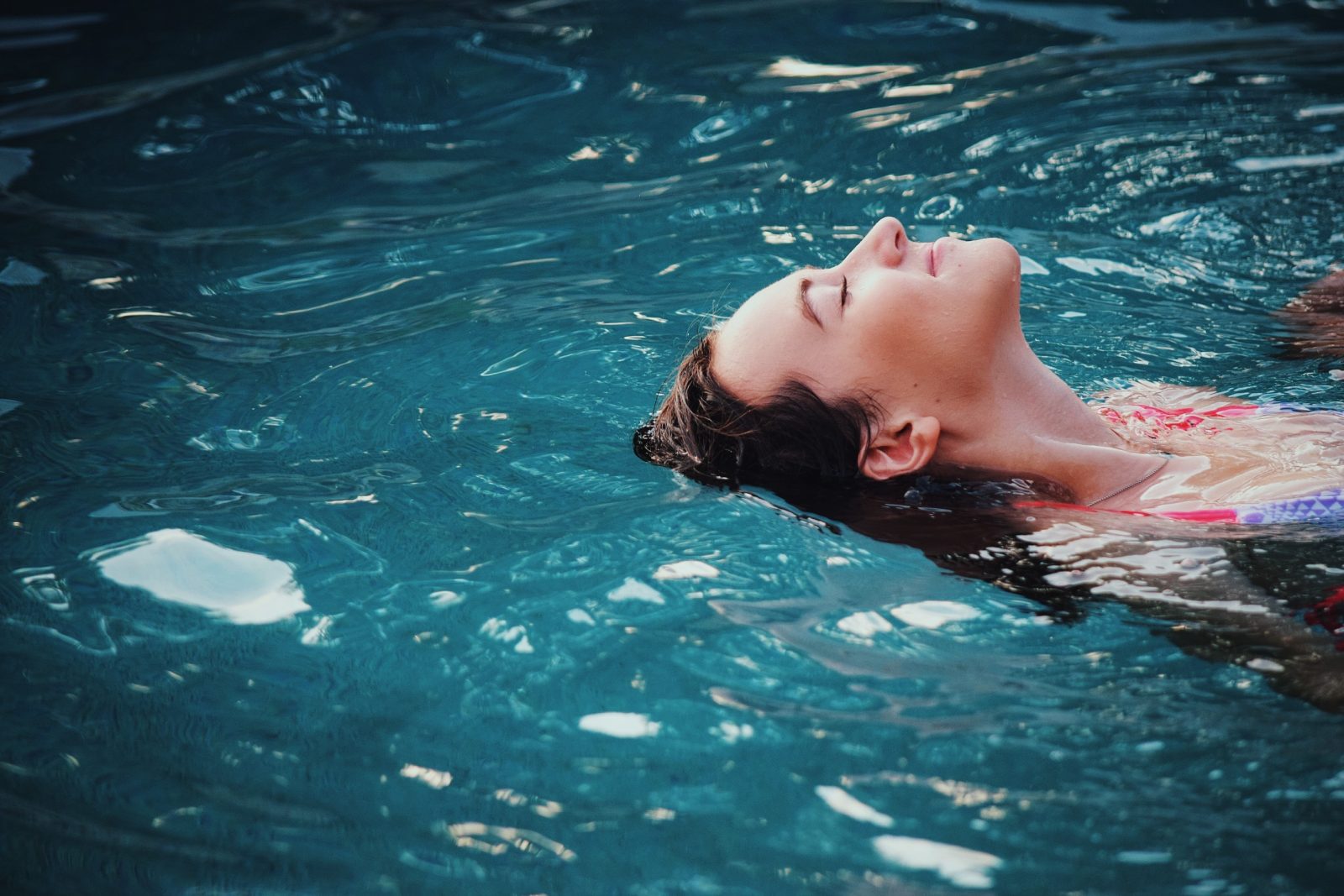What are the benefits of swimming? You’ve probably heard the recommendation that adults aim for 150 minutes of moderate or 75 minutes of vigorous activity each week. Swimming is a fantastic way to achieve this goal while providing a full-body workout and benefiting your cardiovascular system. Swimming burns nearly as many calories as running but without the impact on your bones and joints.
In the United States, swimming ranks as the fourth most popular activity. But what makes it so popular? Dive into the many advantages you can enjoy from regular laps in the pool. Let’s explore the benefits of swimming and how you can seamlessly incorporate it into your routine.
Benefits
1. Engages Your Entire Body
One of the most significant advantages of swimming is its holistic approach to working out your body from head to toe.
Swimming:
- Elevates your heart rate without subjecting your body to excessive stress.
- Tones your muscles.
- Builds strength.
- Enhances endurance.
You can add variety to your swimming workout by using different strokes, including breaststroke, backstroke, sidestroke, butterfly, and freestyle. Each stroke targets distinct muscle groups, with the water offering gentle resistance. Regardless of your stroke, you engage most of your muscles to propel yourself through the water.
2. Boosts Internal Health
While your muscles get a rewarding workout, your cardiovascular system also benefits. Swimming strengthens your heart and lungs, potentially reducing the risk of mortality. Studies suggest that swimmers have roughly half the risk of death compared to inactive individuals. Additional research indicates that swimming might aid in lowering blood pressure and regulating blood sugar.
3. Suited for Individuals with Injuries and Conditions
Before commencing or resuming any exercise program, it’s crucial to consult with your physician. Swimming offers a safe exercise option for many individuals, including those with:
- Arthritis.
- Injuries.
- Disabilities.
- Conditions that make high-impact exercises challenging.
Swimming can alleviate pain and enhance recovery from injuries. A study revealed that individuals with osteoarthritis reported significant reductions in joint pain and stiffness and improved physical capabilities after participating in activities such as swimming and cycling.
Intriguingly, there were minimal differences in benefits between the two exercise groups, suggesting that swimming provides many of the same advantages as frequently recommended land exercises. If you prefer non-swimming aquatic activities, consider water exercises tailored for individuals with arthritis.
4. Ideal for Those with Asthma
The humid atmosphere within indoor pools makes swimming an excellent activity for individuals with asthma. Furthermore, the breathing techniques associated with swimming, such as breath control, can help expand lung capacity and enhance breathing control.
However, some studies suggest that swimming might increase the risk of asthma due to pool chemicals. If you have asthma, consult your doctor regarding the potential risks of swimming. If feasible, opt for pools that use saltwater instead of chlorine.
5. Beneficial for Individuals with Multiple Sclerosis (MS)
Swimming can also provide advantages for people with multiple sclerosis (MS). The water’s buoyancy supports limbs during exercise, and the water itself offers gentle resistance.
In a study spanning 20 weeks, participants with MS experienced significant reductions in pain. Additionally, improvements were observed in symptoms such as fatigue, depression, and disability. Learn more about water therapy for managing MS.
6. Effective Calorie Burner
Swimming is a highly efficient calorie-burning activity. A person weighing 160 pounds can burn around 423 calories per hour swimming laps at a moderate pace. The same individual may burn up to 715 calories per hour at a more vigorous pace. If the person weighs 200 pounds, the calorie burn ranges from 528 to 892 per hour, while a 240-pound individual might burn between 632 and 1,068 calories per hour.
To put these numbers into perspective, a 160-pound person would burn approximately 314 calories by walking 3.5 miles per hour for 60 minutes. On the other hand, yoga may only burn about 183 calories per hour, and an hour on the elliptical trainer might result in burning just 365 calories.
7. Enhances Sleep Quality
Swimming holds the potential to improve your sleep quality. In a study involving older adults dealing with insomnia, participants reported enhanced sleep quality and an improved overall quality of life after engaging in regular aerobic exercise.
Insomnia affects nearly 50 percent of older individuals, making this finding particularly promising. The study encompassed various aerobic exercises, including swimming. This makes swimming appealing to older adults seeking to enhance their sleep patterns.
8. Elevates Mood
Researchers evaluated a small group of individuals with dementia. After participating in a 12-week aquatic program, an improvement in mood was observed. It’s worth noting that the positive psychological effects of swimming and aquatic workouts extend beyond individuals with dementia. Exercise has consistently demonstrated its ability to boost mood in various populations.
9. Stress Management
A survey was conducted on swimmers before and after their swim at a YMCA in New Taipei City, Taiwan. Out of the 101 participants, 44 initially reported mild depression and stress stemming from the fast-paced nature of life. Following their swim, only eight individuals still reported experiencing stress.
While further research is required in this area, swimming could be a potent means of rapidly alleviating stress.
10. Safe for Expecting Mothers
Swimming can provide significant benefits for pregnant women and their babies. An animal study has shown that a mother rat’s swimming can impact the brain development of her offspring and potentially safeguard them from neurological issues like hypoxia-ischemia, although further research is required. Additionally, swimming is a safe activity that can be enjoyed throughout all three trimesters of pregnancy.
Another study has revealed no harmful effects of swimming in chlorinated pools during pregnancy. In fact, pregnant women who swam in the early to mid-pregnancy stages had a reduced risk of preterm labor and congenital defects.
However, it’s crucial to note that while swimming is generally considered safe during pregnancy, some women may have activity limitations due to pregnancy complications. It’s essential to consult with your doctor before initiating new exercise routines during pregnancy, especially if complications occur.
11. Ideal for Children
Children should engage in a minimum of 60 minutes of aerobic exercise daily, and it doesn’t have to feel like a chore. Swimming offers an enjoyable activity that doesn’t necessarily feel like formal exercise.
Children can participate in structured swimming lessons or join a swim team. Unstructured swim time is another excellent option to keep kids active and moving.
12. Cost-Effective
Swimming may be a cost-effective exercise option compared to activities like cycling. Many pools offer affordable membership rates, and some public schools and centers provide free or income-based sliding scale swim hours.
If you’re concerned about the expenses associated with joining a pool, consider checking with your employer or health insurance provider. Some employers and insurers offer reimbursements for enrolling in a fitness program.
Getting Started
To begin your swimming journey, the first step is to find a nearby pool. Many gyms and community centers offer lap swimming sessions, along with water aerobics and aqua-jogging classes. Start by compiling a list of facilities in your vicinity that have a pool and visit them to determine which one aligns with your lifestyle and budget.
Preparing Your Muscles
Before diving into the water, it’s advisable to start slowly. You might even consider commencing your fitness regimen at the gym with strength training exercises that engage your muscles. Attempt movements such as assisted or unassisted pull-ups, aiming for double-digit repetitions. Squats and deadlifts, equivalent to your body weight, or overhead presses with half your body weight are also effective. If you encounter challenges, consider seeking assistance from a personal trainer to perfect your form.
Swimming Lessons
For individuals entirely new to swimming, enrolling in swimming lessons can be highly beneficial. These lessons are available in both private and group settings. During these sessions, you’ll acquire proficiency in various swimming strokes, learn proper breathing techniques, and receive valuable tips to maximize your workout.
To locate adult swimming lessons in your vicinity, you can check the U.S. Masters Swimming database using your ZIP code.
Adhering to Pool Etiquette
Once you’re in the water, it’s essential to observe pool etiquette. Pools often designate lanes for different speeds, such as slow, medium, and fast. Consult the lifeguard to determine the appropriate lane for your pace.
When overtaking another swimmer, always do so on the left-hand side. During pool entry and exit, be mindful not to create waves or disrupt other swimmers, for instance, by jumping. Additionally, maintaining trimmed nails and fingernails can prevent unintentional scratching of fellow swimmers.
Potential Risks
Swimming is generally a safe activity for most individuals. However, like any form of exercise, it carries certain inherent risks. If you have sustained an injury or have specific medical conditions, it’s crucial to consult your doctor before embarking on lap swimming or any aquatic activities. In general, it’s advisable to consult your physician whenever initiating a new exercise regimen.
Individuals with skin conditions like psoriasis, for instance, may experience heightened irritation in chlorinated pool water. Your doctor is the best source for tailored guidelines based on your unique health circumstances.
Swimming Safety
To ensure your safety while swimming, consider these essential tips:
- Choose Designated Swimming Areas: Opt for swimming in designated spots such as pools and marked sections of lakes or other water bodies. If possible, select areas monitored by lifeguards for added safety.
- Swim with a Buddy: When swimming without lifeguard supervision, always bring a friend along. Having a buddy increases safety by providing mutual support.
- Take Swimming Lessons: If you’re new to swimming, consider enrolling in swimming lessons. Age-appropriate classes are available through programs like the Red Cross and local offerings in your area.
- Protect Your Skin: When swimming outdoors, safeguard your skin by applying sunscreen with at least SPF 15 or higher. Avoid swimming during peak sun hours between 10 a.m. and 4 p.m. For guidance on selecting sunscreen, learn more about sunscreen options.
- Stay Hydrated: Even if you don’t feel thirsty, remember to drink water while swimming. The cooling effect of the water can mask dehydration. Consume an ample amount of water and steer clear of beverages containing alcohol or caffeine.
- Supervise Children: Keep a watchful eye on children whenever they are near water. Never allow children to swim alone, as this precaution helps prevent the risk of drowning.
Conclusion
Whether you’re beginning an exercise regimen or seeking a fresh fitness experience, consider diving into swimming. This activity offers a multitude of advantages for your mental, physical, and emotional well-being.
Once you’ve grasped the fundamentals, challenge yourself by swimming laps for 20 to 40 minutes, maintaining an elevated heart rate. Remember to stay hydrated and take breaks when needed. Above all, enjoy the journey!
















Find Us on Socials